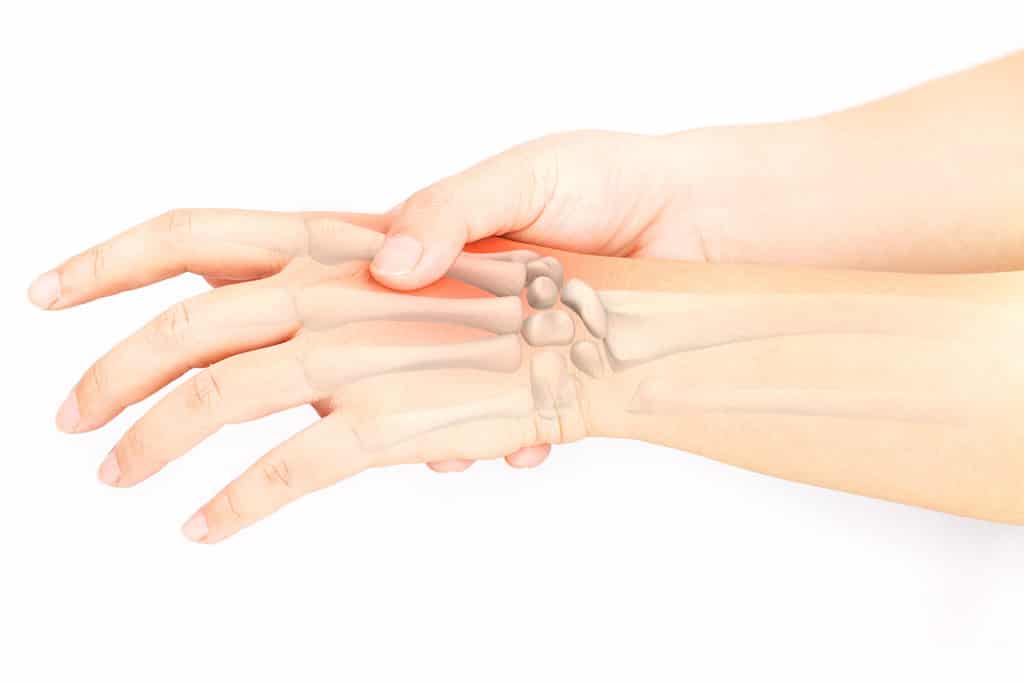The metacarpal bones make up the central portion of the hand, specifically the intermediate portion. The metacarpals start from the last and largest joint of the phalanges and extend to the first set of tiny bones that make up the wrist. If you look at the back of your hand, you will see them vaguely outlined through the skin.
Also known as the metacarpus bones, the metacarpals total five in number, one for each finger in a human hand. They are “long bones,” though they may seem short in comparison to the femur, humerus, or tibia. Each metacarpal features a shaft, a head (distal head), and a base. Four of the metacarpals are dependent on each of the others, while the thumb is the only metacarpal that’s independent of the rest.

Also known as the metacarpus bones, the metacarpals total five in number, one for each finger in a human hand.
©SoftSheep/Shutterstock.com
The function of the Metacarpal Bones
Each metacarpal bone connects to a finger, for a total of 10 fingers and 10 metacarpals. Each metacarpal is wrapped in muscle, tendon, and ligaments and Roman numerals identify each one.
- Metacarpal I – Shortest of the five and sits below the thumb
- Metacarpal II – Longest of the five—below the index finger
- Metacarpal III – The bone directly below the middle finger
- Metacarpal IV – The bone below the ring finger
- Metacarpal V – The second shortest—below the pinky finger
Individual metacarpals feature a medial and a lateral surface and both of those surfaces are concave in form. If they weren’t concave, the would be no way for the interossei muscles to attach to each one.
Metacarpal Articulation
As mentioned above, each of the metacarpal bones has a head, body, and base. The head of each metacarpal sits directly below the associated finger. The body makes up the largest portion of each bone, while the base articulates with an associated bone in the wrist.
- Metacarpal I articulates with the trapezium
- Metacarpal II articulates with the trapezium, capitate, and the trapezoid
- Metacarpal III articulates with the capitate and the adjacent metacarpals
- Metacarpal IV articulates with the capitate, hamate, and adjacent metacarpals
- Metacarpal V articulates with metacarpal IV and the hamate
Together, the metacarpal bones and the phalanges form the largest knuckles on the hand. Just like each metacarpal articulates with a corresponding wrist bone, so too do they articulate with their respective phalanges. The end of the metacarpal (the head) is round and concave in the center, where it articulates with the phalange.
Each phalange is connected to the metacarpal via muscle, tendons, and ligaments, in a sort-of ball-within-socket binding. This allows you to roll your fingers or wag them back and forth. It provides the phalanges with a solid, strong base, yet allows them a great deal of movement.
Metacarpal Pronunciation
The pronunciation of metacarpal is: meh-tuh-kaar-pl




